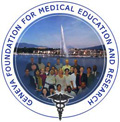Amiloidosis neural como forma de presentación de una hernia discal lumbar
Palabras clave:
neuropatías amiloides/cirugía, diagnóstico diferencialResumen
La amiloidosis se define como un grupo de enfermedades caracterizadas por depósitos extracelulares de tejido fibrilar y puede ser primaria o secundaria y localizada o sistémica; la cantidad de tejido dañado determina sus síntomas y sus signos, a los que pueden sumarse los propios de la enfermedad subyacente en casos de amiloidosis secundaria. Múltiples son las formas de presentación de esta enfermedad, predominan las lesiones renales, las cardíacas, las del hígado o de los nervios periféricos, aunque son descritas formas inusuales diagnosticadas en las biopsias de tejidos procedentes de exeresis de tumoraciones locales. Se presenta el caso de un paciente al que se le diagnosticó una hernia discal lumbar mediante resonancia magnética nuclear y al que, en el acto quirúrgico, se le encontró una tumoración intraradicular que resultó, en el estudio anatomopatológico, una lesión amiloide. En el trabajo se discuten las características del caso, se hace una revisión de la literatura y se realza la importancia de la sospecha diagnóstica de esta enfermedad; en todo paciente con enfermedades subyacentes potenciales de causar amiloidosis, así como ante la presencia de proteinuria o de síndromes auto inflamatorios, son de vital importancia, para el diagnóstico, los estudios anatomopatológicos.Descargas
Descargas
Cómo citar
Número
Sección
Licencia
Aquellos autores/as que tengan publicaciones con esta revista, aceptan los términos siguientes:
- Los autores/as conservarán sus derechos de autor y ceden a la revista el derecho de primera publicación de su obra, el cuál estará simultáneamente sujeto a una licencia Creative Commons Atribución/Reconocimiento-NoComercial 4.0 Internacional — CC BY-NC 4.0 que permite a terceros compartir la obra siempre que se indique su autor y su primera publicación esta revista.
- Los autores/as podrán adoptar otros acuerdos de licencia no exclusiva de distribución de la versión de la obra publicada (p. ej.: depositarla en un repositorio institucional o publicarla en un volumen monográfico) siempre que se indique la publicación inicial en esta revista.
- Se permite y recomienda a los autores/as difundir su obra a través de Internet (p. ej.: en archivos telemáticos institucionales o en su página web) antes y durante el proceso de envío, lo cual puede producir intercambios interesantes y aumentar las citas de la obra publicada. (Véase El efecto del acceso abierto).





 1 octubre 2025
1 octubre 2025


